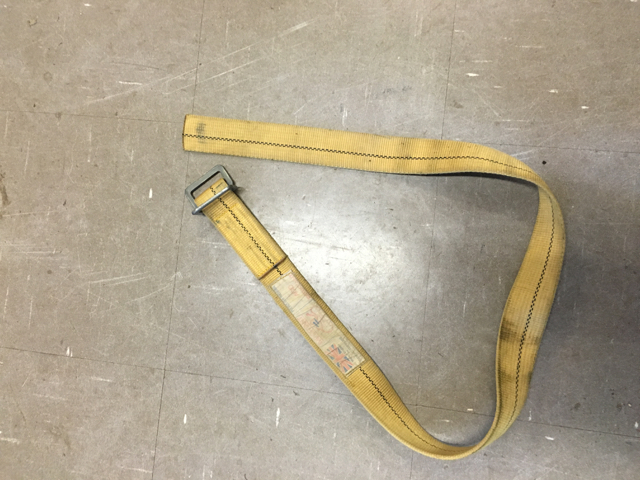Belts are not PPE kit, as such they are not tested and not rated. Hanging on just a belt is going to hurt, or worse! However they are very useful within the context of the Mine/Cave Leader. They are also really useful to be quickly converted into a improvised (emergency) harness.
During a Cave and Mine Leader training course the question was asked how strong are these belts. So we put a few around a tree, attached a load cell and rope to the belt with an oval krab and pulled like hell!
Three belts were pulled to over 3 kN and none (not even a really old belt) failed, nor showed any sign of damage.
So what does that mean; a harness is tested to hold a static load of 15kN, so these ad-hoc tests don’t come anywhere close to that! However HSE suggests (HSL/2003/09) that adult (80kg-100kg) workers at hight should not be subjected to a impact (fall into a harness) of more than 6kN (4kN for smaller bodies in the 50kg-80kg range and 8kN for larger people in the 100kg-140kg range). It would be nice to pull a selection of belts to around 6kN and hold them for at least a minute or two (the climbing harness standard is to hold them for 2mins), and check for any damage or slippage in the buckle, however this little bit of testing does give some confidence in the strength of these broad belts for use in Caves or Mines.
Following on fro these initial tests which took place in 2014, we pulled a few more at an update workshop in April 2018. This time we went at it! We managed to get our hands on a mechanical hand winch usually used for pulling out tree roots 🙂 We fitted a belt around a tree, clipped a rope into it with a steel krab and pulled. In each case we took it up to over 10kN (at which point we got a little worried!) Both belts held although showed signs of abuse that would trigger retirement from a PPE type inspection.
Conclusion
Belts shouldn’t be subjected to anywhere near the loads we pulled them too. In reality belts are best considered as a fall prevention tool; i.e. they stop you from getting near somewhere you could fall. At times they can be used to give a little support when going up or down an awkward step, but this in situations where the consequences of that fall would not be severe (for example climbing broken or slaby ground). Understanding the limitations of the use of belts is a key judgment required of Cave and Mine Leaders.
Belts manufactured from a reputable dealer, broad enough to share the expected load around a persons body without causing them discomfort or harm are likely to be appropriate for the expected use. Users could go someway to satisfy themselves that the belts purchased are up to the task by securing them to a tree, fitting a rope to the belt and having 3 or 4 people pull on that rope (this should put around 2-2.5kN of force into the belt) then check it for slippage at the buckle or any damage/major wear. Adopting a similar inspection and retirement regime as that used for a harness would seem appropriate. Use as an improvised harness is something people will really need to consider carefully; it certainly shouldn’t be a technique people set out with the intention of doing in my mind. Ultimately though it’s down to the user (or provider) to satisfy their fit for purpose.



